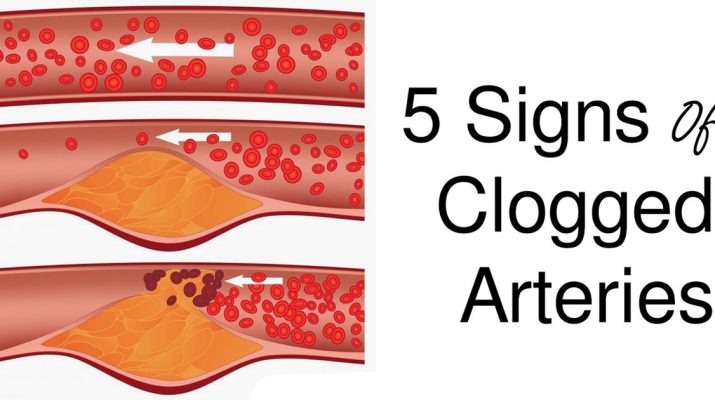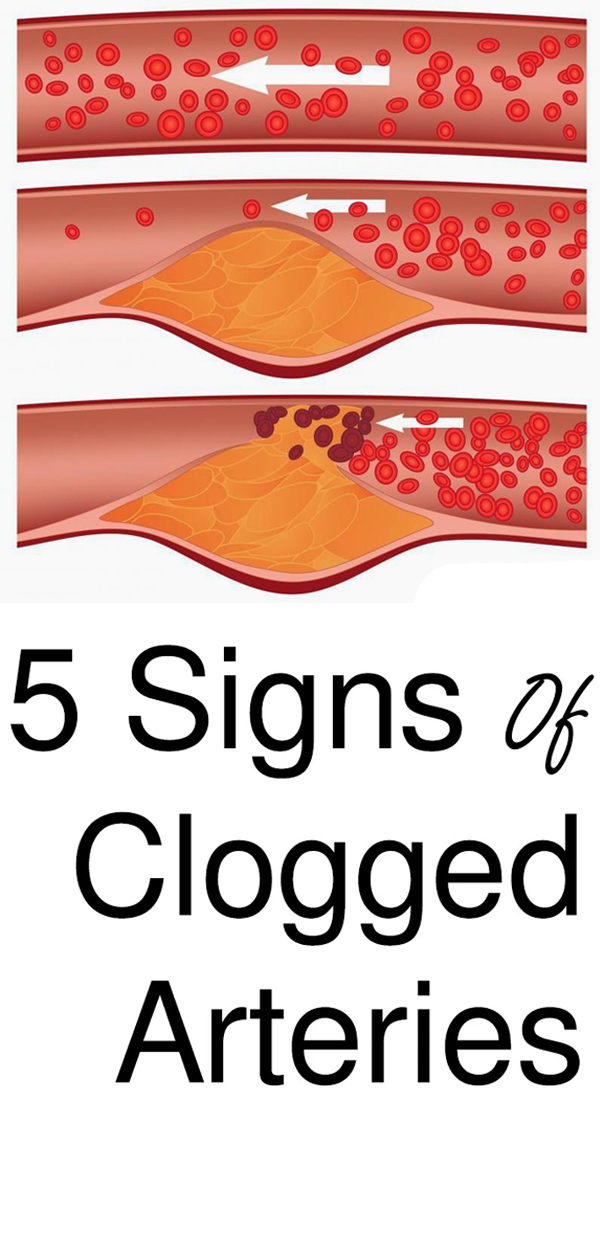The arteries are the blood vessels that deliver oxygen-rich blood from the heart to the tissues of the body. Each artery is a muscular tube lined by smooth tissue and has three layers. – WebMD
The arteries of our bodies are vital to our health. Without a fully-functioning system of arterial vessels, the blood in our body cannot be effectively delivered to our organs. As such, it is important that our lifestyles are conducive to the health of these blood vessels.
Clogged arteries can lead to a variety of abnormal health conditions – some of them potentially life-threatening. Among these conditions are heart attack, stroke and cardiovascular disease. Furthermore, an assortment of ailments can arise from clogged arteries, including: vision loss, arthritis and chronic pain.
Although detecting possibly clogged arteries is more difficult than many other conditions, it is indeed feasible to identify congested arteries as a symptom. In identifying with any of these signs, we have the opportunity to seek medical care before serious health conditions arise.
Here Are 5 Signs You May Have Clogged Arteries:
1. Lower Back Pain
The arteries of our lower back are among the first areas to accumulate plaque. As such, lower back pain is a common first symptom of artery blockage. Lower back pain can occur when reduced blood flow to the back weakens the disks that cushion the vertebrae – leading to painful herniated disks and pinched nerves.
An arterial defect in the back area is a quite common condition. Consider that roughly 10% of the population will demonstrate advanced blockages in their lower back by age 20. With this knowledge, it is beneficial to our children that they receive a physical at least once a year.
In a study done by the European Journal of Vascular and Endovascular Surgery, individuals that suffer with chronic back pain are at an increased risk of developing clogged lumbar arteries.
2. Calf Pain
Arteriosclerosis – the thickening and hardening of the arterial walls – can also block the arteries that deliver blood to the legs. When this happens, it is common to experience pain in one or both calves, a condition known as claudication.
Those that smoke are in a higher risk class than those who do not. Regardless, if this symptom is detected, a doctor’s evaluation should be conducted ASAP. Simple blood tests will be conducted that examine the pulses of the legs, in addition to a couple of other basic tests.
Fortunately, this is a condition that is very reversible. Eating more plant-based foods and less animal products can reverse claudication relatively quickly. In fact, calf pain can be relieved within a matter of weeks, and not occur again throughout life if the proper changes are made.
3. Discomfort Or Pain Of The Legs And Feet
Peripheral artery disease (PAD) is a buildup of cholesterol and plaque that can occur in the extremities. PAD often results in discomfort in the feet and legs, potentially limiting the ability to walk. In worse cases, PAD is advanced enough to result in the loss of a limb.
Once again, simple tests will identify arterial conditions such as PAD. During a routine medical exam, a doctor will check the pulse of the feet. In addition, the doctor may also conduct a screening that determines the amount of blood flow to the ankle.
People that have frequent pain or tiredness in the legs should be checked for PAD. Past or current smokers have an increased risk of the disorder, as do those with a family history of PAD or other cardiovascular problems.
4. Ear Creases
One of the more odd signs of clogged arteries is ear creases. Now, a momentary pause while about half of our readers stand in front of a mirror…welcome back!
Seriously, medical reports have mentioned ear creases as a silent sign of coronary heart disease (CHD). More specifically, an ear crease that runs diagonally from the ear canal to the lower edge of the earlobe.
This is a rather contentious sign of clogged arteries, although it may be worthwhile to schedule a routine checkup. Of course, ear creases can also be another physical sign of aging.
5. Erectile Dysfunction
Once again, the effects of clogged arteries directly relate to decreased blood flow. Our (ahem) private members are no different in this regard. Maintaining an erection requires that blood have an unobstructed path to this area.
According to WebMD, Erectile Dysfunction at least indicates that some of the blood vessels on that path are not in ideal health. As a precaution, it’s a good idea to schedule a doctor visit to discuss these symptoms.
In conclusion, having any of these signs is not a surefire indication of clogged arteries. By no means is this article meant to provoke feelings of helplessness or distress. We at Power of Positivity truly care about each one of our readers’ health and well-being. In providing content such as this, we aim to shine the light on any potential barriers to a fully healthy and bountiful life.


